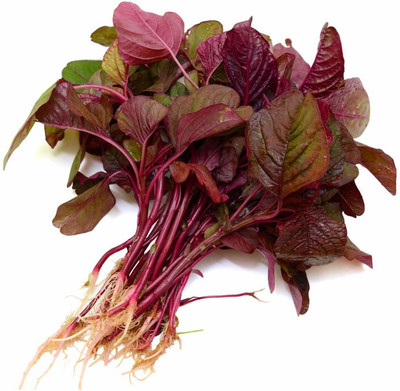WILLVINE Red(Amaranthus) Lal Saag Cheera Hybrid Spinach Seeds Seed(200 per packet)
Quick Overview
Product Price Comparison
When the spinach cultivation is done continuously, you can harvest in alternate days, will be a better addition of an organic vegetable to your day-to-day diet. In addition to good prices, red spinach cultivation is also cheap and hassle free. These seeds are suitable for Indian climatic conditions and largely cultivated in the leading producer statesThese vegetable leaves can live and grow throughout the years, it knows no season if proper watering occurs. Red spinach harvest takes 20-25 days from transplanting. Harvest of red spinach is quite faster than regular spinach.Generally, all vegetable plants love plenty of sunlight, moist ground and good drainage rich light soil. Keep regular watering to keep the ground moist and not wet. Transplanting should be done together with the existing pot ground, and must be staked immediately.The plants will grow fast when they feel stable and secured, apply organic fertilizers for the real and natural taste of the leaves.Use small knife or blade to cut / harvest gently without shaking the plant stem.PLANTING INSTRUCTIONSGather the seeds and plant in late fall by spreading the seeds along the field.Amaranthus seeds can be directly seeded into your flower garden, or started indoors for transplanting later.Space seeds or seedlings 10-12" apart. They will tolerate a little crowding, and look good in clumps or groups.Amaranth is a warm season crop that requires full sun. Best germination occurs when soil temperatures are warm and grows well by planting in the same spot as leaf lettuce or radishes.GROWING REQUIREMENTSWATERINGWater the plant regularly, with small quantities of water every morning. Amaranth is fairly drought-tolerant.PESTSThe plants are vulnerable to Tarnished plant bug and Amaranth weevil. The pests swarm around the growing seed heads and suck the fluid out, they can stunt the seed production. The weevils are a 2-stage threat with the larvae chewing on the roots and the adults going after the leaves.SOILAmaranthus needs soil with a pH ranging between PH 4.2 to 9.1. It grows well in well- drained soil rich in Nitrogen and PhosperousSPOTAmaranthus prefers warm climate with six to eight hours of full sunTEMPERATUREAmaranth germinates best at soil temperatures around 25 degree celsius (72 degree F)HOW TO HARVESTTo determine if it is ready for harvest, keep a sheet of clean paper under the bent over seed head and shake gently. If you see tiny, shiny black seeds falling on the paper,the crop is ready for harvest::Once the seeds begin to readily fall from the tassels, take the seed heads in your hands and rub them over a bucket to catch the seed. This method of harvesting lessens the amount of debris and chaff that needs to be removed::Once you have harvested the amaranth, it needs to be completely dried before you store to avoid molding. Leave it on trays to dry in the sun before storing.


